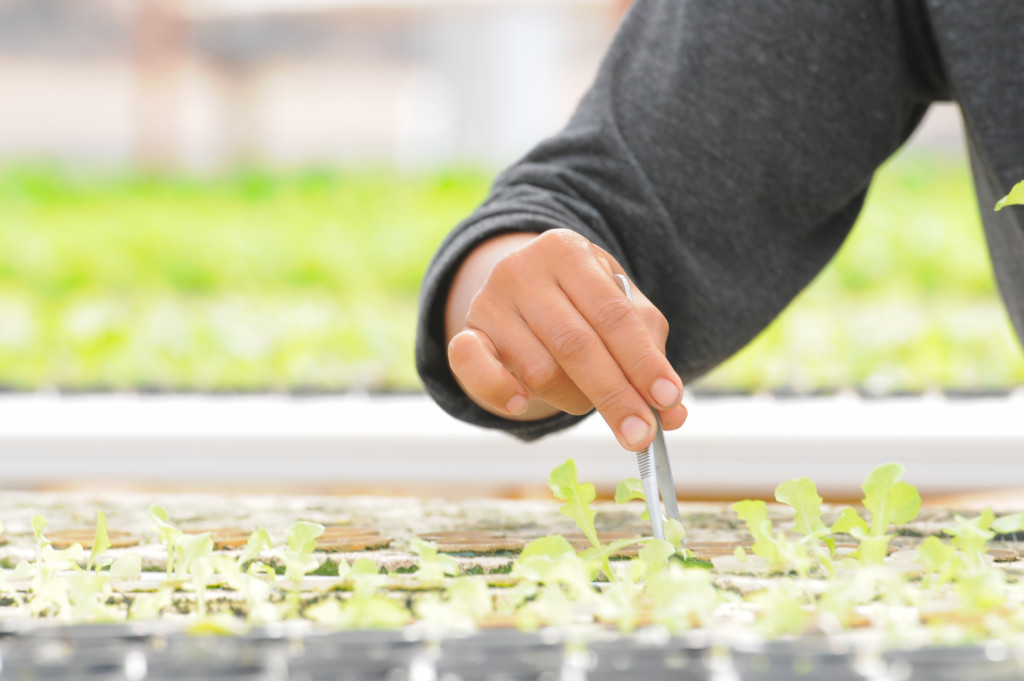- Winter is a tough time for gardening, but there are still crops that can be grown indoors.
- Choose winter crops that do well in cold temperatures and grow quickly.
- Investing in a cold-weather greenhouse provides protection and a controlled environment for your plants.
- Use a good quality soil mix that is well-draining and has sufficient nutrients.
- Grow lights are essential to mimic sunlight for indoor plants during winter.
Winter is a magical time of year, with the snowflakes, hot cocoa, and cozy blankets, but it can also be challenging for gardeners. Most plants do not thrive in the cold, so gardeners have limited options when preparing for the winter.
However, there are still many crops that you can grow indoors and improve your gardening skills. This blog post will provide you with tips on how to grow produce at home during winter.
Choose the Right Crops to Grow
The first step in growing crops during winter is choosing the suitable crops to grow. Winter crops can be divided into several categories, including leafy greens, herbs, and root vegetables. It would be best if you chose crops that do well in cold temperatures and grow fast.
Some of the popular winter crops include:
Arugula
Arugulas are leafy greens that are easy to grow in the cold. They can be grown indoors and have a peppery flavor, making them a great addition to soups and salads.
Kale
Kale is another leafy green that thrives in cold temperatures. It is also packed with nutrients, making it an excellent choice for winter gardening. Kale is versatile and can be used in smoothies, soups, or as a side dish.
Invest in a Cold Weather Greenhouse

Investing in a cold-weather greenhouse is a must if you’re serious about growing crops during winter. Greenhouses protect from the harsh elements and create a controlled environment for your plants to grow. You can also regulate the temperature inside the greenhouse, ensuring that your crops have the ideal conditions for growth.
Use the Right Soil
Soil is the foundation of every garden, and it is just as important indoors as outdoors. Good quality soil is crucial to ensure that your plants grow well. You can mix your soil by combining vermiculite, peat moss, and perlite. Ensure your soil mix is well-draining and has sufficient nutrients to help your plants grow.
Use Grow Lights
Grow lights are essential for indoor winter gardens because they provide the light plants require to grow. Plants need at least 6 hours of sunlight to grow, and during winter, the available sunlight is not enough.
You can use grow lights to mimic the sun’s light and give your plants the much-needed light to germinate. Consider using energy-efficient LED grow lights, which provide the correct spectrum of light that plants need.
Water Your Plants Correctly
Water is crucial for the growth of your plants, and it is essential to water your plants correctly. Overwatering can cause root rot, and underwatering can lead to wilting and stunted growth. Ensure you water your plants only when the soil is dry to the touch. Here are some tips and tricks to ensure that you water your plants correctly:
Don’t water the leaves
The leaves of the plants should not be watered as it can lead to fungal growth and disease. Water directly into the soil near the base of the plant. Also, use room temperature water, as cold water can shock the plants.
Don’t let the soil dry out completely
While it’s important not to overwater your plants, you don’t want to let the soil dry out completely. Check the ground regularly and water as needed. This will ensure that your plants have enough moisture for healthy growth.
Keep an Eye on Temperature and Humidity

Plants grow best in environments that are not too hot or too cold and have the proper humidity levels. You should ensure that your home garden provides the ideal plant conditions. A temperature range of 60-75°F is ideal for most plants, and a humidity level of 30-50% is perfect for leafy greens and herbs. You can also use a humidifier to regulate humidity levels in your home garden.
Wrapping Up
Growing crops during winter is not as difficult as it may seem, and it is a great way to enjoy fresh produce all year round. Choosing the right crops, and using the correct soil, grow lights, water, and humidity levels can help you grow a successful indoor garden during winter. With a little effort and care, you can have a garden full of healthy and thriving plants that add freshness and vibrancy to your home. Happy gardening!



